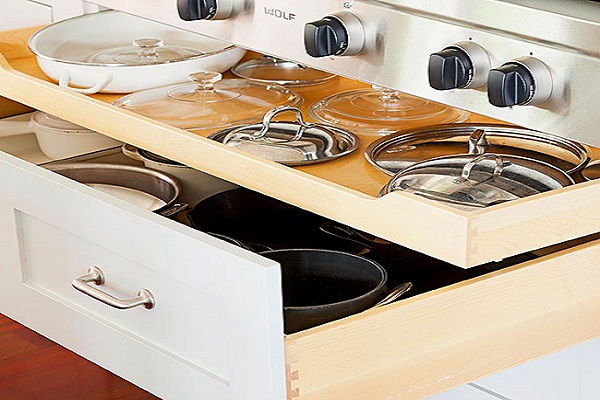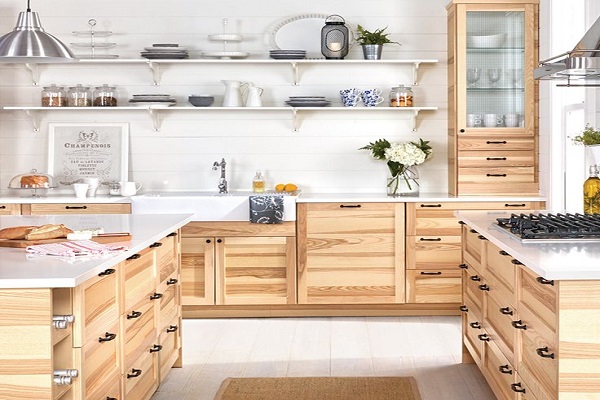Are you looking for new kitchen cabinets? You will see that prices and quality vary enormously. Here is what to know before you make your next purchase.
Hardware and Installation
Kitchen cabinets are often made of plywood or particleboard.
Plywood is more robust and more expensive, but durable cabinets can also be made of particleboard.
Even more important than the material is the way the cabinets are assembled.
The cheapest cabinets are made of 3/8 “(1 cm) particle board assembled with hot melt adhesive and staples.
Particle board cabinets 2 “(3/4”) thick are assembled with dowels or fixing connectors, especially for particle board. They can approach the durability of plywood, as long as they are kept dry.
Particleboard is softening when wet, and of course, it should be remembered, especially with regard to the cabinet under the sink, where plumbing fittings can sink, and Shelves where glasses and dishes can be stored while they are still wet.
For this reason, high-quality particleboard cabinets are often covered with melamine or vinyl, water-resistant plastics.
Low-cost particleboard cabinets have a very thin paper-like coating that offers virtually no water protection.
Although rugged plywood cabinets can be built with wood screws and glue, the screws do not fit well in particleboard.
This is why special dowels or mounting connectors are required for a robust particleboard construction.
You may also like to read: Top 6 Outdoor and Patio Design Trends
Drawers
Make sure that all drawers work smoothly, without much play on the sides.
The best drawers feature a “full extension” hardware that draws the drawer completely so you have access to the back.
Drawers with sealed ball bearings on both sides are superior to those with a rail underneath.
Remove a drawer and check the construction. Drawers made of plywood or solid wood must have a nesting seal between the sides and the front.
In the case of particleboard, the joint should be made with dowels or connectors.
This seal absorbs the shock when the drawer is closed. If you see a sharp joint held together with glue and nails, it is only a matter of time before the drawer fronts come off.
Make sure the bottom is rigid because these drawers will need to support a lot of weight.
Facade
Then you have to choose the finish from the front of the box.
The choices offered are wide and varied, from flat, easy to clean laminated plastic up to the beautiful expensive natural cherry tree.
Your choice of façade materials remains a matter of aesthetics and budget rather than a question of sustainability.
Manufacturing
Spend your fingers on the doors and drawer fronts to make sure they are smooth.
Observe along the surface to ensure there are no drops, tiny bubbles or sanding marks. Look inside.
Make sure all joints are tight and the shelves look sturdy.
Make sure the doors open and close smoothly and fit snugly.
In general, prices reflect quality, although the price for cabinets of the same quality may vary from dealer to dealer. With this information, you will be able to make a good choice.




